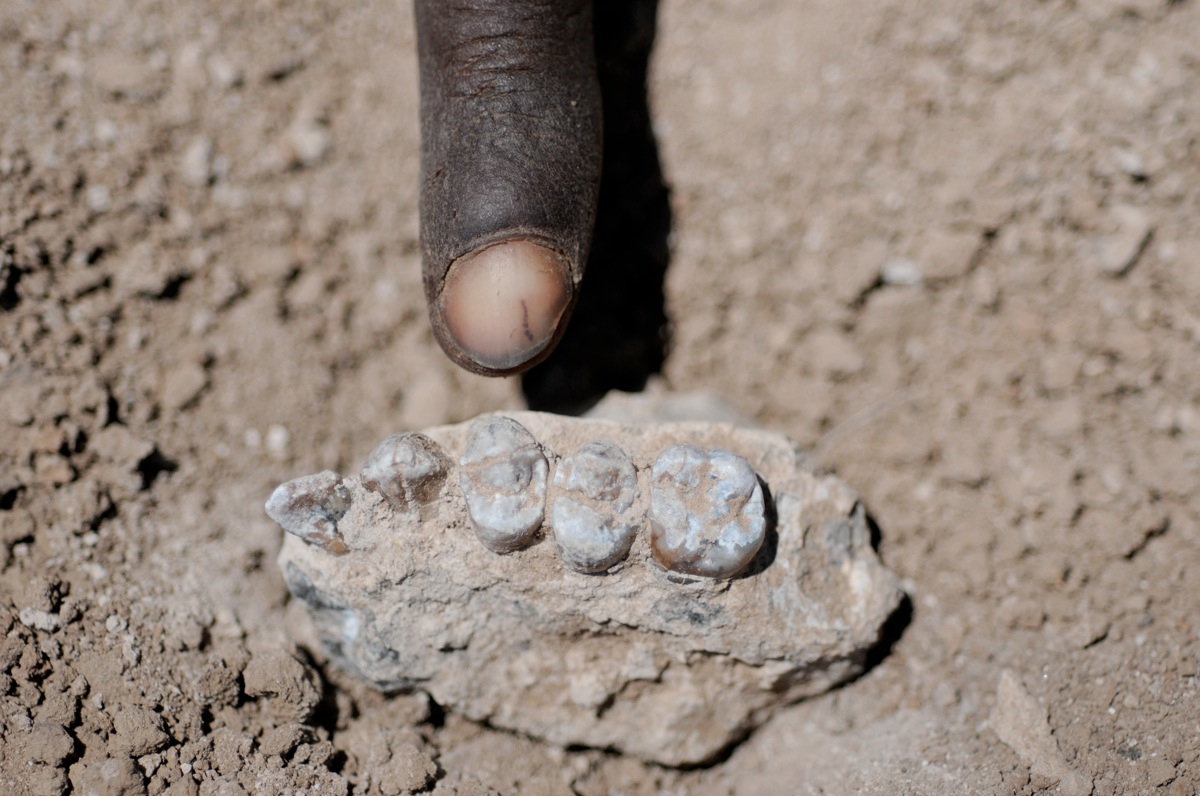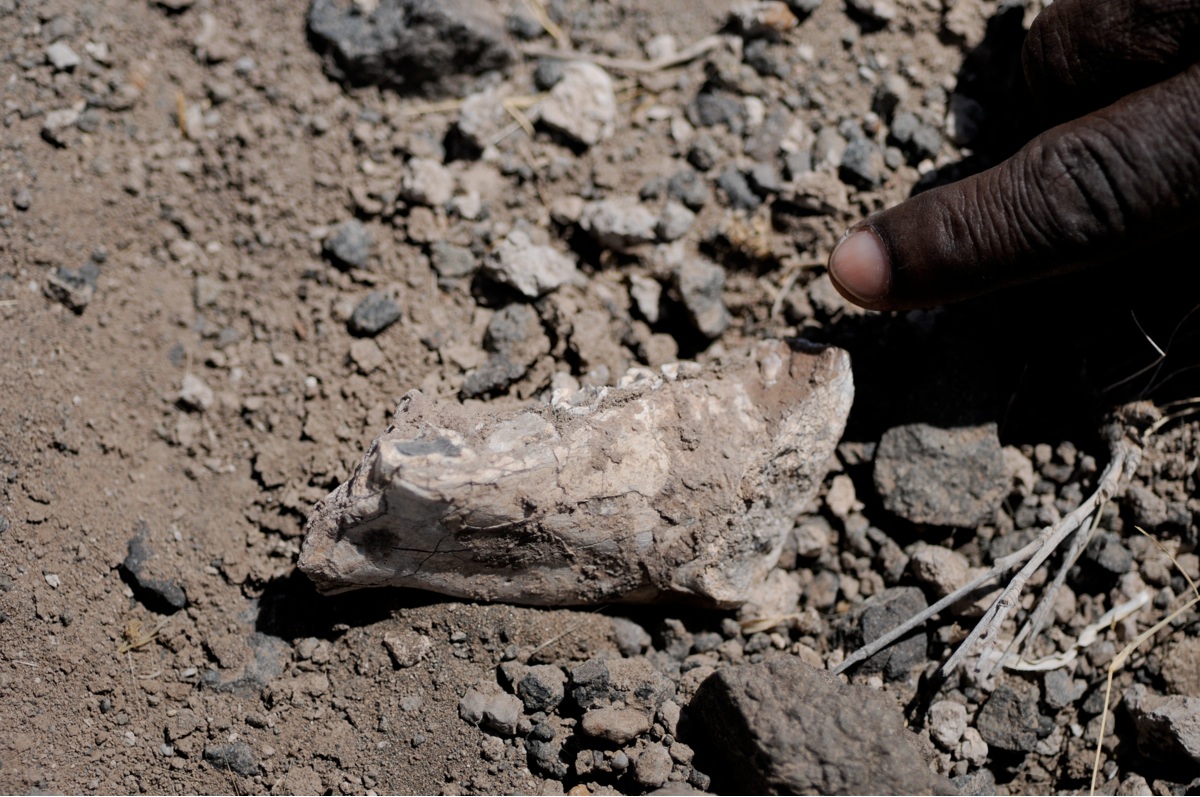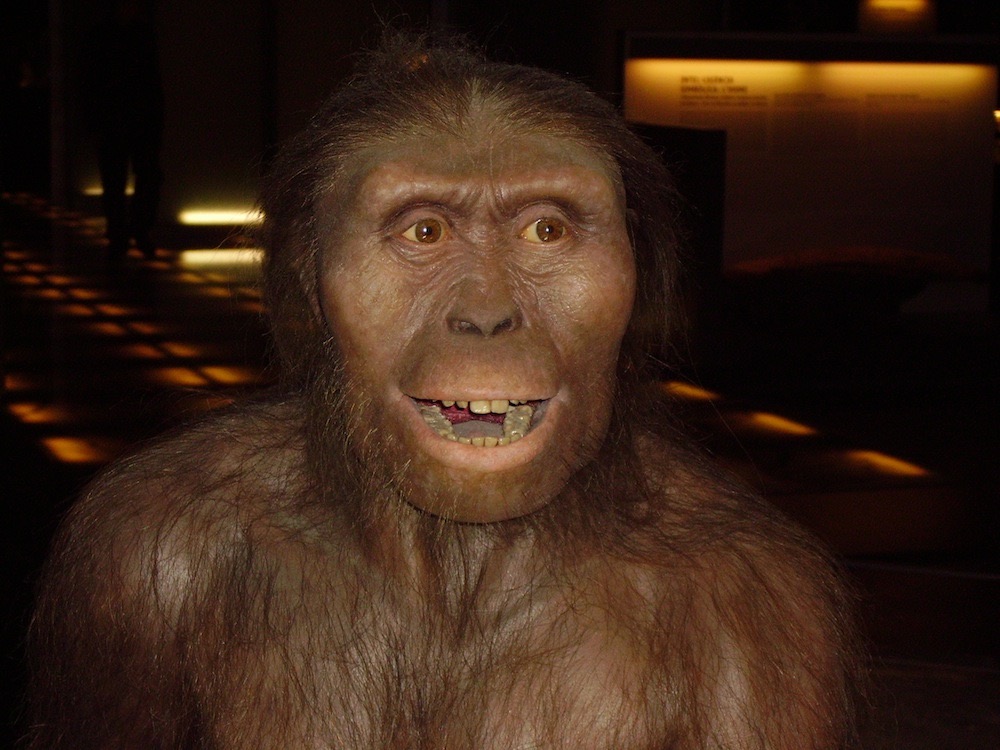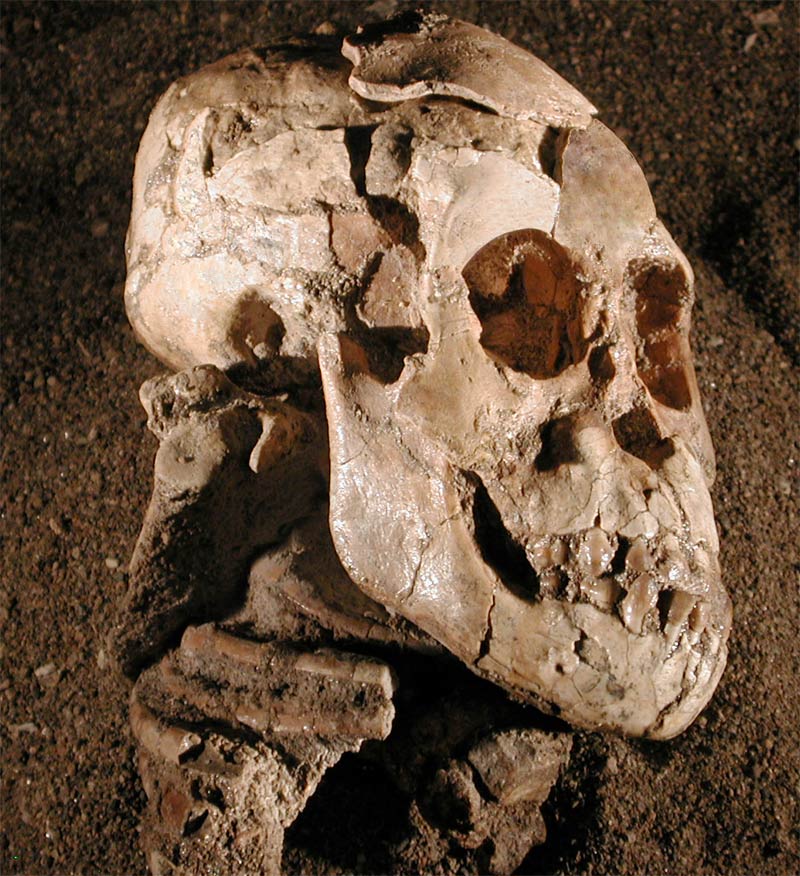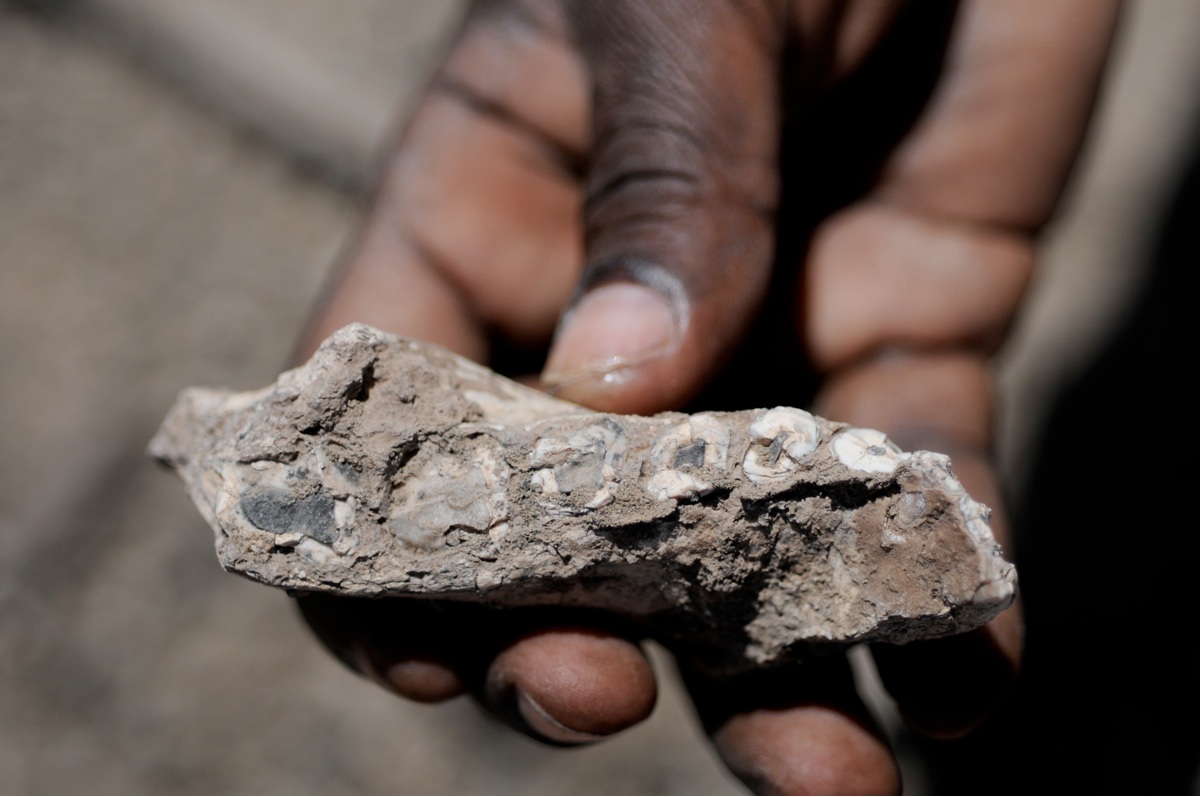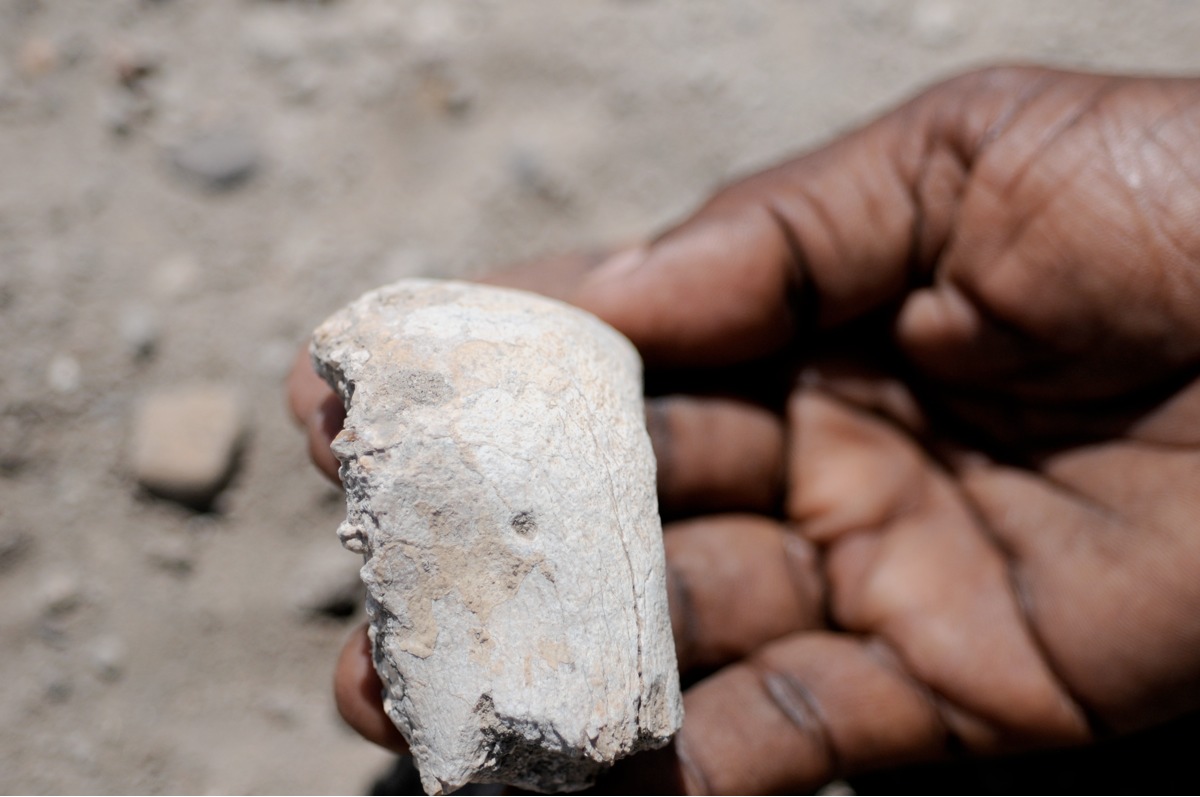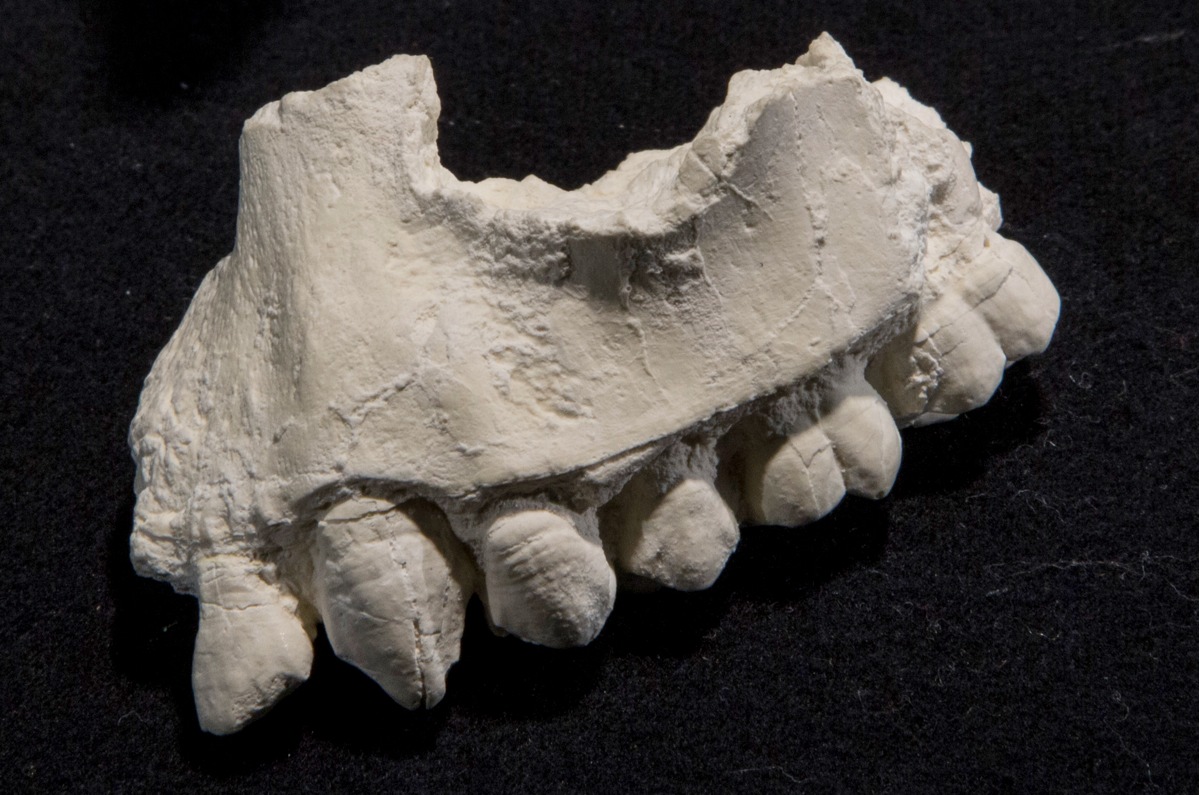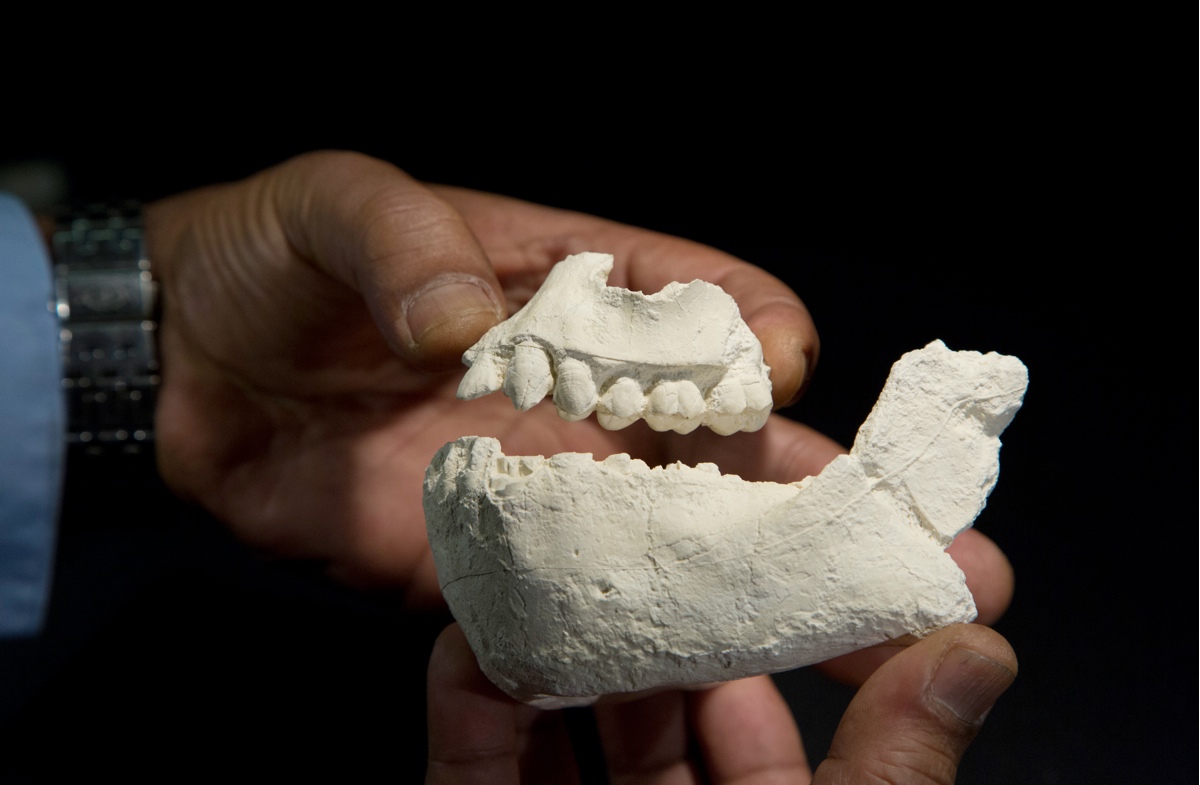Photos: New Human Ancestor Species Discovered
Bones from a possible new humanlike species have been discovered in the central Afar region of Ethiopia. The species lived between 3.3 million and 3.5 million years ago alongside the famous Lucy, a member of Australopithecus afarensis, and suggest several homins coexisted at the time, during the Middle Pliocene. Here are images of the fossils discovered in Ethiopia. [Read full story on the newfound species]
Neighbor of Lucy
The researchers have named the newfound species, represented by a lower jawbone and isolated teeth, Australopithecus deyiremeda; the local Afar words deyi means "close," and remeda means "relative," referring to the fact that the species is a close relative of all later hominins (relatives of humans dating to after the evolutionary split from the chimpanzees). Here, a holotype of the individual's upper jaw, which was found on March 4, 2011. (Photo Credit: Yohannes Haile-Selassie)
Toothless jaw
The left toothless half of the fossilized lower jaw, as it was found by Alemayehu Asfaw on March 4, 2011. The right half was found a meter away. (Photo Credit: Yohannes Haile-Selassie)
Lucy's species
The best-known hominin that lived before the evolution of the genus Homo was Australopithecus afarensis from eastern Africa; this species, which included the famed Lucy, lived between 2.9 million and 3.8 million years ago, and which included the famous Lucy. Here an artist's conception of an Au. afarensis individual. (Image Credit: Wikimedia commons user 1997)
Get the world’s most fascinating discoveries delivered straight to your inbox.
Lucy comparisons
The researchers found the newfound fossils showed thicker lower jaws and thicker tooth enamel than Australopithecus afarensis. Here, the cranium, face and mandible of "Selam," an exceptionally well-preserved skeleton of a 3-year-old Au. afarensis girl dating back 3.3 million years from Dikika, Ethiopia. (Image courtesy of Zeray Alemseged / Dikika Research Project):
Lower jaw
The left half of the lower jaw of Australopithecus deyiremeda. (Photo Credit: Yohannes Haile-Selassi)
Another specimen
A second paratype lower jaw of Australopithecus deyiremeda as it was found by Alemayehu Asfaw on March 5, 2011. A small fragment that joined this specimen was found nearby. (Photo Credit: Yohannes Haile-Selassie)
In situ
The second paratype lower jaw of Australopithecus deyiremeda photographed at the location of its discovery. (Photo Credit: Yohannes Haile-Selassie)
Jaw cast
A cast of the holotype upper jaw of Australopithecus deyiremeda. (Photo Credit: Laura Dempsey)
Ancestor jaws
Lead author Yohannes Haile-Selassie of The Cleveland Museum of Natural History holds casts of the jaws of Australopithecus deyiremeda, a new human ancestor from Ethiopia. (Photo Credit: Laura Dempsey)
Jeanna Bryner is managing editor of Scientific American. Previously she was editor in chief of Live Science and, prior to that, an editor at Scholastic's Science World magazine. Bryner has an English degree from Salisbury University, a master's degree in biogeochemistry and environmental sciences from the University of Maryland and a graduate science journalism degree from New York University. She has worked as a biologist in Florida, where she monitored wetlands and did field surveys for endangered species, including the gorgeous Florida Scrub Jay. She also received an ocean sciences journalism fellowship from the Woods Hole Oceanographic Institution. She is a firm believer that science is for everyone and that just about everything can be viewed through the lens of science.


